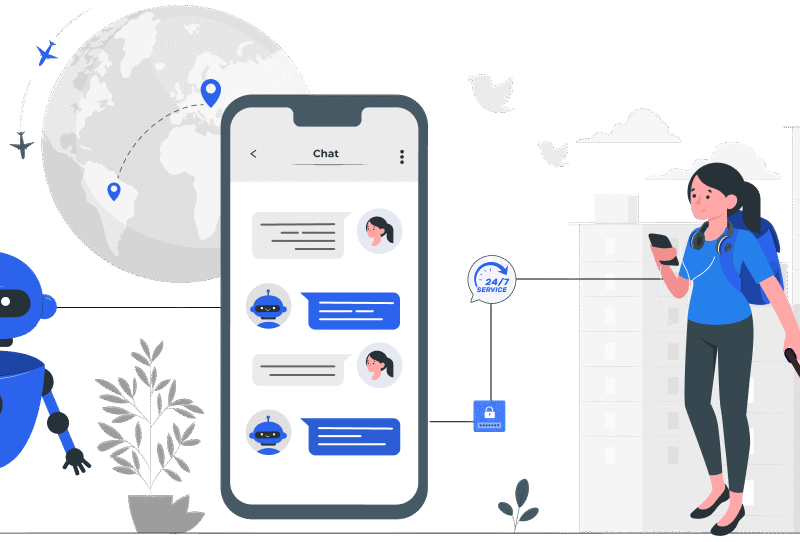The explosion of generative AI tools has changed the game. But here’s the catch: it has become a fragmented maze. Creatives, developers, and AI practitioners are increasingly burdened by a proliferation of tools, platforms, and models, each designed for specific tasks, yet often lacking interoperability or cohesive integration.
According to Grand View Research, the global artificial intelligence market was valued at USD 279.22 billion in 2024 and is expected to grow to USD 1,811.75 billion by 2030, with a projected CAGR of 35.9% from 2025 to 2030. This surge reflects both rising adoption and increasing complexity. As the ecosystem expands, costs rise, workflows become fragmented, and selecting the right tools becomes increasingly challenging.
Specialized AI tools have emerged to meet diverse needs, and while this innovation is valuable, it adds to the complexity. Fragmentation isn’t inherently negative. It’s a sign of growth, but without a unified AI ecosystem to bring it all together, we’re left navigating a maze when we should be moving forward.
The fragmentation problem
AI’s rapid evolution has led to the development of specialized models and tools tailored for various use cases. While this specialization has undoubtedly driven innovation, it has also led to a fragmented ecosystem. For every new task, developers are required to manually select the best model or tool, often from a vast array of competing options. The complexity of managing these tools can present several challenges.
The exponential growth of AI models over the years underscores the fragmentation issue, illustrating how the increasing variety of tools further complicates decision-making and workflow management for AI professionals.
Firstly, the cost. Many businesses and individuals find themselves juggling multiple subscriptions to various platforms, each providing access to a single AI model or service. This can quickly add up, particularly when each tool or model is specialized for a different task. Global corporate investment in AI technologies reached $252.3 billion in 2024, underscoring the growing financial commitment to AI. The result is a bloated AI infrastructure with little synergy, leaving users to navigate a complex maze of options that may not even be compatible with each other.
Secondly, the inefficiency of managing these tools. AI professionals often have to switch between different platforms, dealing with various APIs and models, which results in wasted time and resources. A report by Qatalog and Cornell University found that 45% of workers experience productivity loss due to context switching between applications, taking an average of 9.5 minutes to regain focus, which directly affects workplace efficiency.
Lastly, the issue of poor integration between these various tools. Without a unified approach, AI workflows become fragmented themselves, with teams struggling to coordinate between tools and models. Collaboration becomes more challenging as stakeholders are forced to work with different systems that don’t communicate with each other, slowing down the entire development process.
However, some enterprises prefer specialized solutions that align precisely with their specific workflows, suggesting that optimal approaches may vary by organization size and complexity. For these organizations, the depth and precision of purpose-built tools can outweigh the downsides of fragmentation, at least in the short term. Still, as AI systems scale, even highly tailored setups may eventually face integration and maintenance challenges that call for a more unified approach.
Moreover, as the integration of AI tools becomes increasingly complex, companies frequently fail to equip their teams with the necessary skills to navigate and use these technologies effectively. According to McKinsey, while 71% of organizations are piloting generative AI, fewer than 10% have effectively scaled it, often due to issues such as tool sprawl and integration challenges. Without proper training, employees struggle to adapt to new systems, which further complicates the integration process.

As the number of AI models continues to grow exponentially, unified orchestration becomes essential to avoid operational chaos. Without it, organizations risk inefficiency, duplication, and missed opportunities, making it harder to scale AI efforts and remain competitive in an increasingly complex landscape.
The need for a unified approach
Before converging on unified platforms, many organizations have explored alternative approaches to reduce fragmentation, including enterprise AI orchestration tools, API gateways, and multi-cloud deployment strategies. These methods offer partial relief by improving connectivity and flexibility, but they often introduce new layers of complexity.
In light of these challenges, the need for a unified platform becomes clear. The World Economic Forum emphasizes that to fully reap the benefits of AI, it is crucial to overcome fragmentation by integrating data and tools across industries and creating common frameworks for AI governance.
A truly unified platform goes further by simplifying the entire workflow end-to-end, but also unlocks several key benefits for users:
- Streamlined Access: A unified AI ecosystem centralizes diverse models into one platform, eliminating the need to manage multiple subscriptions or search for the right tool.
- Cost Efficiency: Consolidation reduces overlapping services, enabling access to top-performing models without the expense of multiple platforms.
- Smarter Decisions: Intelligent routing automates model selection based on context and history, accelerating workflows and minimizing decision fatigue.
Case study: Unified platform approaches
As AI fragmentation grows, unified platforms are emerging to streamline access, simplify integration, and reduce complexity. Examples in this space include Microsoft’s Azure AI Studio, Google’s Vertex AI, and specialized platforms such as SearchQ.AI, among others.
As a case study, SearchQ.AI illustrates how a unified platform can address the fragmentation challenge in the AI ecosystem. By consolidating various models and tools into a single interface, it demonstrates how unification can streamline workflows and reduce reliance on multiple subscriptions.
Internal telemetry indicates the platform can support users to work smarter, faster, and more cost-effectively through:
- Progressive User Experience:AI features a simple, personalized interface that progressively reveals advanced capabilities and role‑specific tools based on user experience and field, ensuring beginners aren’t overwhelmed while power users access comprehensive functionality.
- Comprehensive Model Consolidation: Centralizes access to over 100 AI models from major providers (OpenAI, Anthropic, Google, Meta, etc.) and diverse AI tools, including image generation, web search, and workflow automation, all in one platform.
- Intelligent Orchestration and Auto-Selection: Uses proprietary algorithms to automatically analyze prompt complexity and user preferences, routing requests to the most cost-effective and capable model combination without manual selection.
- Multi-Modal Consensus Processing: Runs queries through multiple top models in parallel, then synthesizes the best elements from each response while maintaining context, delivering accuracy rates significantly higher than single-model approaches.
- Dynamic Cost Structure: Implements dynamic credit optimization and volume-based pricing, delivering considerable savings compared to multiple subscriptions.
Like any unified platform approach, SearchQ.AI also comes with potential limitations. Challenges such as vendor lock-in, training requirements, and reliance on a single access point must be considered, especially since outcomes can vary depending on an organization’s size, infrastructure, and internal capabilities.
Implementation considerations
While unified platforms can streamline workflows and reduce complexity, they may not be suitable for every organization. The right choice depends on several operational and strategic factors, including team structure, technical capacity, and regulatory demands.
- Team Size: Smaller teams may benefit from simplified, unified platforms, while larger teams may prefer specialized tools for greater flexibility and customization.
- Technical Expertise: Unified solutions are more accessible to non-experts, while specialized stacks often require advanced skills.
- Compliance Requirements: Industries with stringent data or security requirements must ensure that unified platforms meet relevant regulatory standards.
- Existing Infrastructure: Integrating with current systems can be a challenge; therefore, compatibility should be carefully evaluated.
- Use Case Complexity: High-volume, routine tasks are well-suited to unified platforms; niche or advanced use cases may require specialized models.
- Scalability & Flexibility: Unified, model-agnostic platforms reduce vendor lock-in but must scale with growing AI demands.
Technical Note: Intelligent Orchestration in Unified AI Platforms
Unified AI platforms typically rely on intelligent orchestration to optimize performance, efficiency, and personalization across diverse AI models. Using SearchQ.AI as an implementation example, it incorporates the following approaches:
- Smart Model Selection: Multi-stage pipeline employs millisecond pattern matching, followed by fine-tuned task classifiers. Proprietary performance database benchmarks models against task patterns, considering token limits, specialized capabilities, cost efficiency, and real-time availability metrics.
- Dynamic Routing & Orchestration: Parallel query processing spawns multiple model calls simultaneously, serving the fastest response while canceling redundant processes. Multi-Model Consensus mode synthesizes outputs using semantic deduplication, achieving notably higher accuracy than single-model approaches, according to internal benchmarks.
- Context Awareness: Session memory maintains cross-model context switching with predictive caching algorithms. Retrieval-Augmented Generation (RAG) implementation supports hot-swappable document stores and live web data integration through abstraction layers and provider-specific adapters.
- Cost Optimization: Dynamic credit system periodically analyzes actual token consumption patterns, leveraging volume pricing, intelligent request distribution, request batching, and smart caching, which can offer a significant cost reduction compared to individual subscriptions.
Model-Agnostic Architecture: Three-layer architecture with unified abstraction interface, dedicated provider adapters handling API differences, and resilience layer with circuit breakers. “Provider DNA” profiling enables intelligent failover across 100+ models via semantic capability mapping.
Why the future of AI depends on platform-level thinking
As AI rapidly evolves, fragmentation is becoming a critical barrier. To stay competitive, businesses must adopt a unified platform that enables smarter, faster, and more cost-effective workflows.

The industry is responding with various approaches, including enterprise orchestration tools, multi-cloud strategies, and emerging unified platforms from both established tech giants and specialized providers. Each approach offers distinct advantages, depending on the organization’s specific needs and technical requirements.
Organizations should carefully evaluate whether unified, specialized, or hybrid approaches best fit their specific needs, resources, and strategic objectives. When aligned with these factors, unified AI systems can streamline operations, reduce costs, and help unlock the full potential of AI, paving the way for a more efficient and integrated future.

